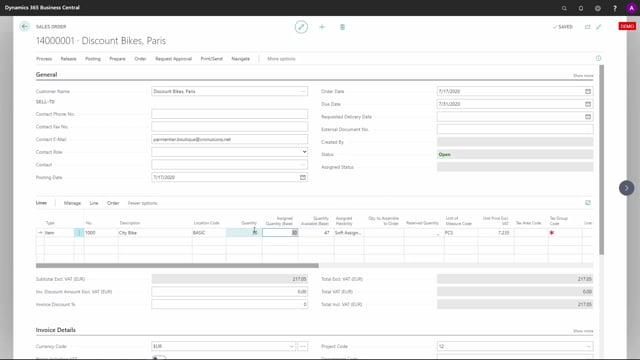
There’s a complex limitation that you should be aware of if you use Assign Quantity in different companies.
So, if you use intercompany functionality to transfer a sales order from one company through a purchase order to a sales order in an inventory company, there’s some dangerous gaps in the Assign Quantity, and I’ll show you here.
In this scenario, I just made a sales order line in a sales company of quantity 30.
And if I’m looking at the graphical profile in the other company where I also calculated my assignment, I can see here that the end inventory is 47.
Well, basically it shouldn’t be because I just made a sales order of 30, so my inventory should have been 17.
But the problem is that this graphical profile is calculated in my sales company, and the sales order is still open, meaning I haven’t made the intercompany transactions.
When I’m doing the intercompany transaction, if I use intercompany functionality, I will make a sales order in the inventory company, which will then be assigned.
And if you use the intercompany app, it will also bring back the Assign Quantity base amount.
The problem is that in this scenario, you could have different salespersons sitting in different sales companies and creating sales orders at the same time, which are all open, and that all might be assigned.
But when the first one will release the sales order and create the intercompany functionality, it returns the actual Assign Quantity.
So, the last sales order to be released in a sales company might not have quantity enough, and then while releasing the sales order, the Assign Quantity base will just be whatever is left.
So, therefore, if you use Assign Quantity functionality within the company, you have to teach your salesperson in the sales companies that the gap from entering the sales order to releasing the sales order might affect the quantity assigned.

